11 Copywriting Techniques for High-Converting Landing Pages
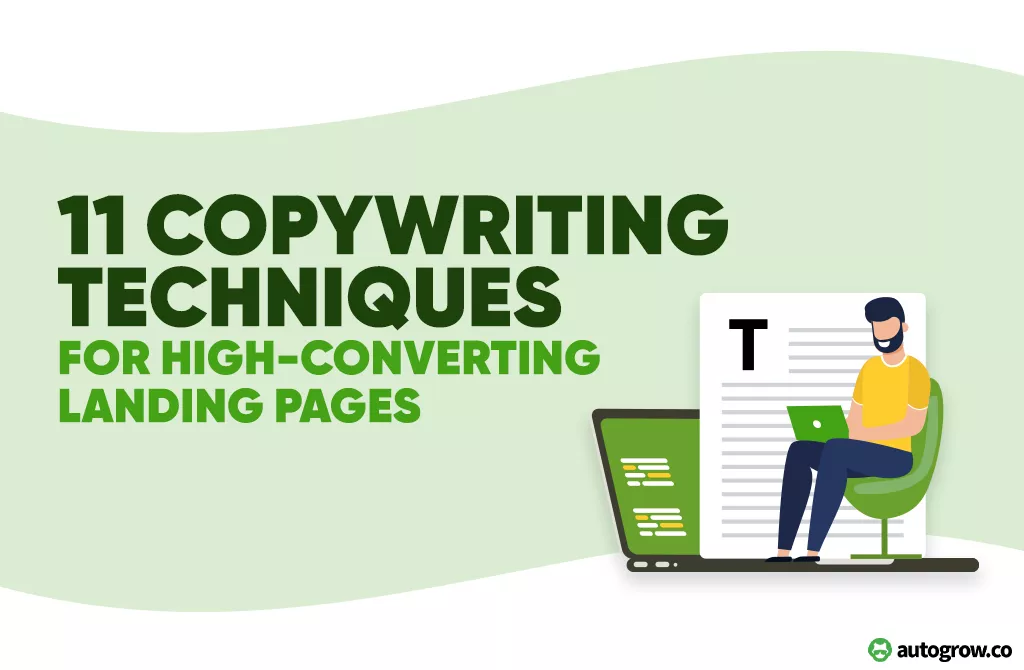
Remember Metroid?
The side-scrolling Super Nintendo game starring a bounty hunter with a giant laser gun for a hand?
It’s a classic.
And believe it or not, it has a lot in common with copywriting.
Hear me out...
Between blasting through alien guts and jumping over bottomless crevasses, every now and then you’d stumble upon a door.
And no matter what you did—blast it, punch it, whatever—you just couldn’t open it. Not at the moment anyway…
But eventually, you’d earn a new tool or skill later on in the game. And with that new tool or skill, you could go back to that door so many levels ago and unlock an entirely new area.
By levelling up your skills, you could return to an old level and uncover something spectacular.
And that is how Metroid relates to copywriting.
When you learn how to upgrade your landing page copy, you can actually go back and infuse your landing pages with those new techniques.
This can transform so-so converting landing pages into marketing megastars.
That’s why today I’m showing you the killer copywriting techniques you use can right now to level-up your landing pages. Inside we’ll look at:
- The 11 high-converting techniques used not just by brands like Apple and Mailchimp. But also by trusted marketing trailblazers like Bob Bly and David Ogilvy.
- Detailed tips and walkthroughs of specific words you can use to trigger emotions, spur action, and guide your visitors to your “Buy Now” button.
- Real-life tools to help you tighten up your copywriting, attract more prospects, and convert more leads than ever.
Let’s learn how to level-up your landing pages with better copy...
Want to delegate all your marketing and funnel work done—without the headaches of hiring? Download our free guide: 33 Marketing Projects You Can Delegate to Growbo and discover how to save 100+ hours a month, grow faster, and scale without the overhead.

Technique #1: Spend Extra Time Perfecting Your Headlines
“On the average, five times as many people read the headline as read the body copy. When you have written your headline, you have spent eighty cents out of your dollar.”
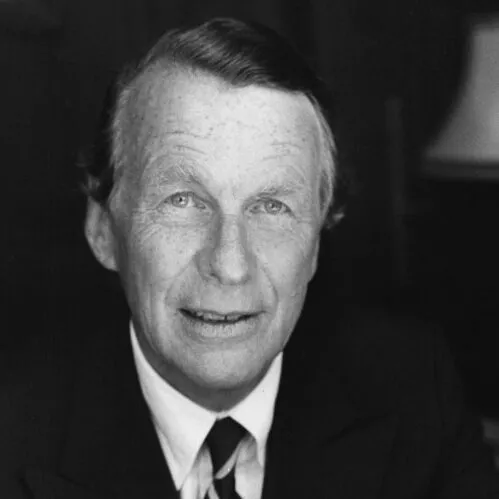
If you’ve studied marketing, you’ve probably heard that quote before. It comes from David Ogilvy—widely considered one of the most influential marketers of the modern age.
He knew that if you wanted to truly make an impact on your audience, you needed to “wow” them right off the bat. You needed to grab their attention, pique their interest, and communicate what it is your product had to offer (all in less than 30 words no less).
And he practiced what he preached, too.
Below is one of his most famous advertisements.

In that single headline, Ogilvy conveyed:
- Power (60mph, above most speed limits in those days)
- Modernity (electric clock inside the car)
- Luxury (the loudest noise at high speeds is the clock)
And with all that packed in, it’s no wonder why this has become one of the most famous advertisements in history.
Other brands like Land Rover even released their own satirical take on the ad that took the country by storm.
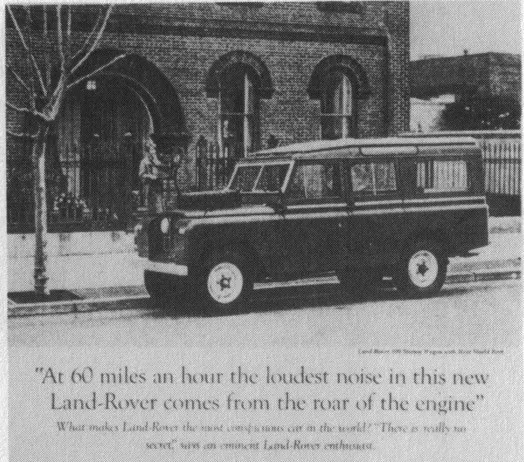
Now, the takeaway here is that your headline is extremely important. And that means you need to spend extra time perfecting it.
Copyblogger found that 8 out of 10 people will read your headline. But only 2 out of 10 will read any further than that.
And since researchers now believe that the human attention span has dropped from a full 12 seconds down to a puny 8 seconds, you have to communicate your brand’s value immediately in your headline.
By refining your headline, you can see massive jumps in your conversions.
For example, one case study from our Proven Sales Conversion Pack even found that tweaking a headline can lead to a whopping 90% jump in conversions.
Here’s the final page:

And here’s a table outlining the different options they tested:
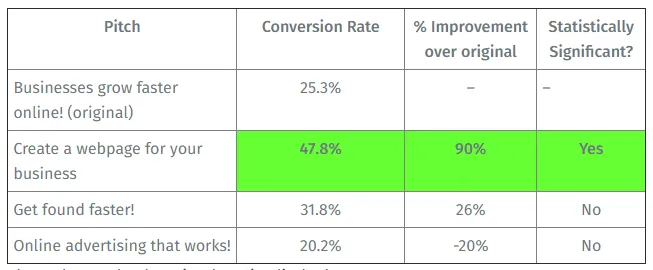
So be sure to put extra time into your headlines. Because when it comes to copywriting, a well-written headline can be the most powerful marketing asset you have.
How Can You Start Implementing It?
First off, be sure to commit the time needed to create an impactful and well-made headline.
Just because this section of copy is physically shorter doesn’t mean it doesn’t carry converting weight.
One tool in particular that we use to create our headlines is the Advanced Marketing Institute’s Headline Analyzer.
This tool gives you a numerical score of how strong your headline is based on 3 different categories: emotion, intellectualism, and spirituality.
It’s a great resource for anyone trying to improve their headlines. And it’s free!
Additionally, you can follow these tips from our previous article on writing impactful headlines (some of which actually come into play later in this article):
- Clarity beats cleverness
- Use logos (logic), ethos (credibility), and pathos (emotion) in your headline
- Incorporate scarcity and urgency
- Focus on the customer
- Use unusual punctuation
- Ask a question
- Use power words
Technique #2: Use Emotion to Spur Action in Your Audience
Emotion is one of the core drivers of action in humans.
The old saying goes that people buy on emotion and justify their purchase with logic.
And if you want your copywriting to convert, infusing your copy with emotion is one of the best ways to boost your sales.
In fact, it’s even one of the core 11 Laws of Sales Funnel Physics (Law #11: The Law of Emotion).
For instance, if you take a look at some of the nation’s biggest charities, you can clearly see just how much they’re appealing to emotion on their pages.
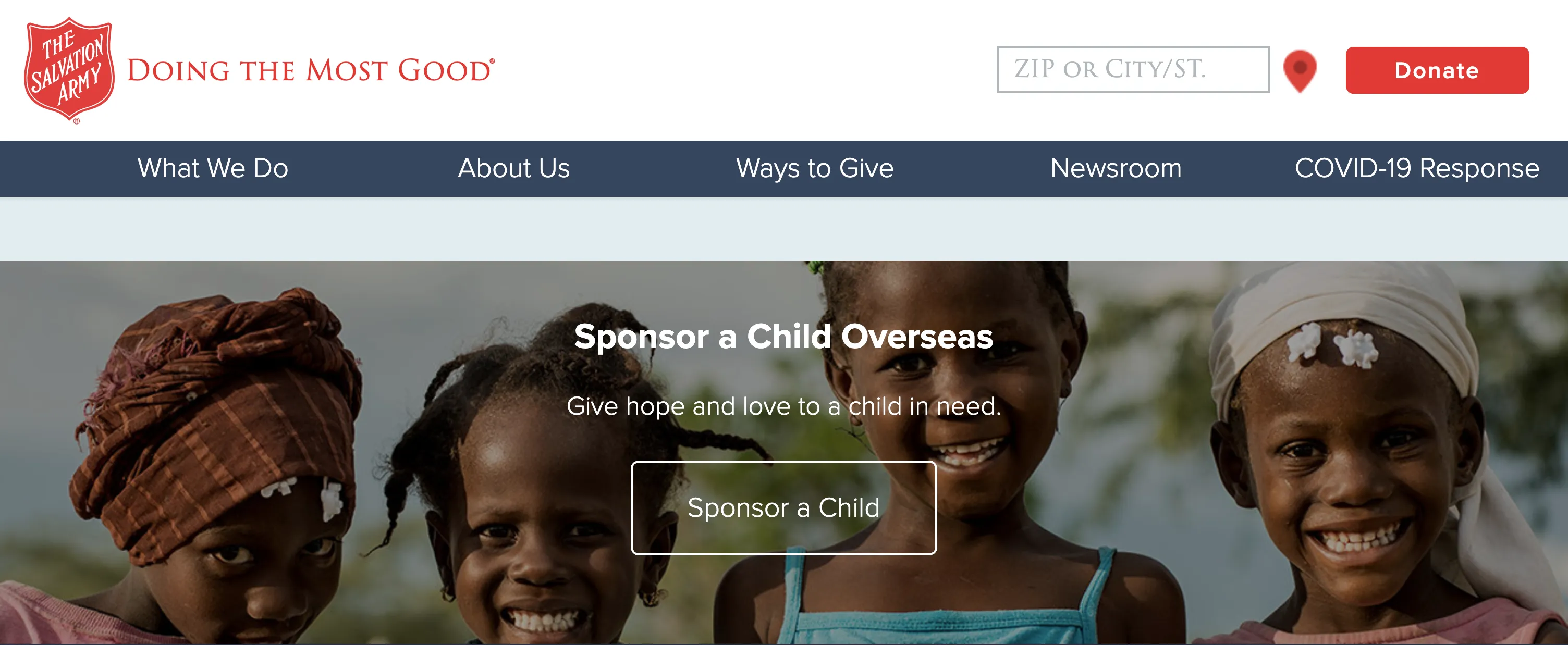
See how the Salvation Army directly connects your donation to “hope and love” for children in need?
Instead of pointing out how your donation could go towards, say, buying food and shelter, they skip the middleman all together. They go right for what is really getting most people to donate—the emotions of hope and love.
The nonprofit USA food bank organization Feeding America also appeals to emotion on their homepage.
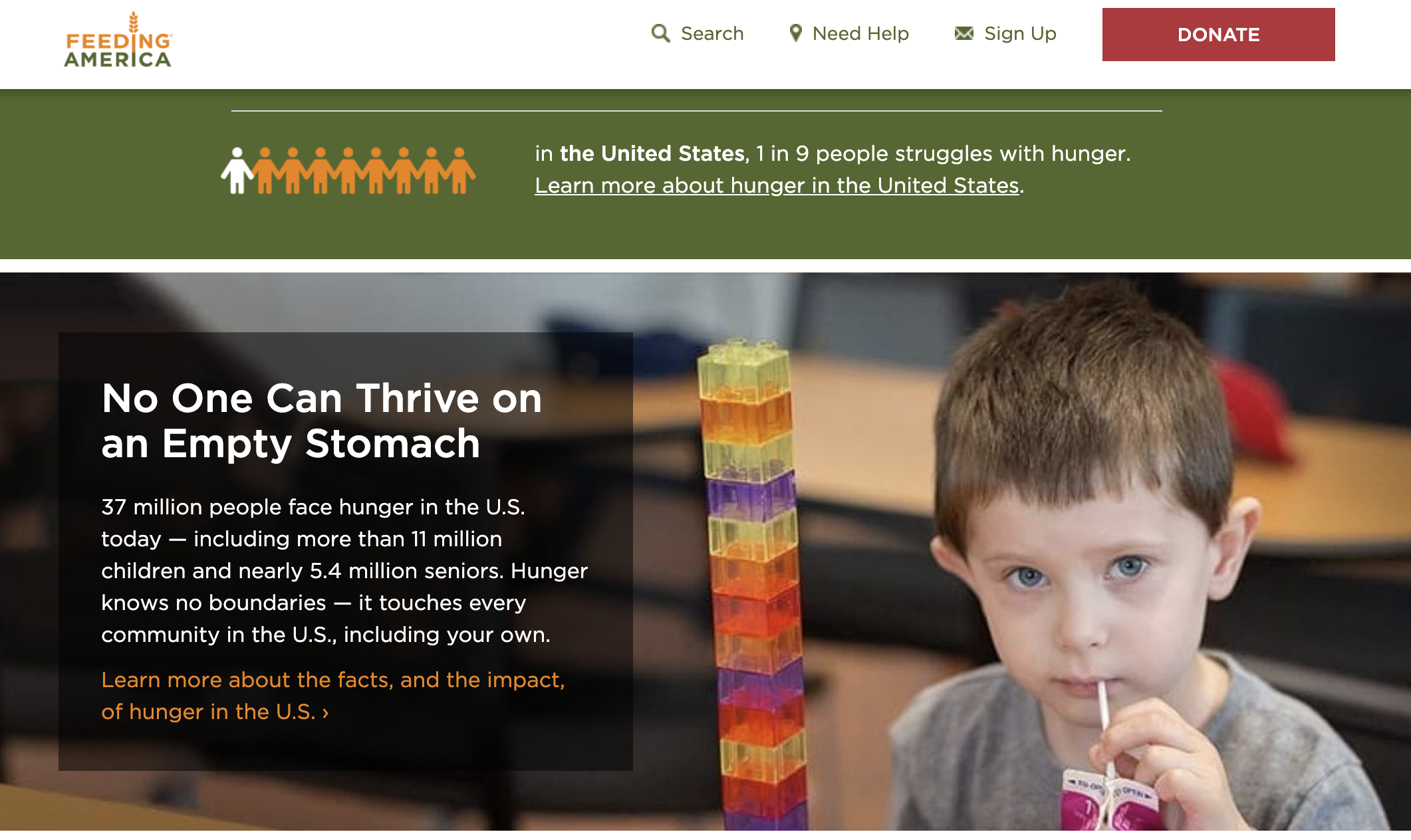
Besides using an image of a child (like Salvation Army), the copy also includes a section calling out that hunger does in fact occur in every community in the United States.
So rather than the problem occurring in some far off country, they point out that children are starving right here in your own backyard.
This connection makes the problem seem dire, close, and personal, driving the emotional reaction even more.
How Can You Start Implementing It?
There are a few ways you can start adding more emotion to your copy.
1. Call Out Pain Points: By calling out their pain points, you’re utilizing both fear (fear that they’ll keep feeling that pain) and empathy because you understand what they’re going through.
2. Use Reciprocity: Offer your leads something of value for free. A lead magnet, for example, lets you build authority and tap into customers’ feelings of reciprocity. And beyond that, mention the value of this free gift in your copy. Because the more your audience keeps that in their mind, the more likely they’re going to be to give you their business as a result.
3. Harness the Power of Guilt: How will they feel when their business goes under because they didn’t invest in your services? Are they really living the life they always wanted? Are they doing all they can for a cause they believe in or ignoring it? With the right copy, guilt can be a powerful motivating force that you can use to get customers to buy.
4. Use Emotionally Charged Words: With the right words in your arsenal, you can tap into very specific emotions in your readers. And with enough practice and skill, you can actually inspire them to feel those emotions themselves. This can give you a substantial edge (maybe even a superpower) when it comes time to motivate your audience to buy. Try using the emotional copywriting word wheel below to choose the right words for your target emotion.
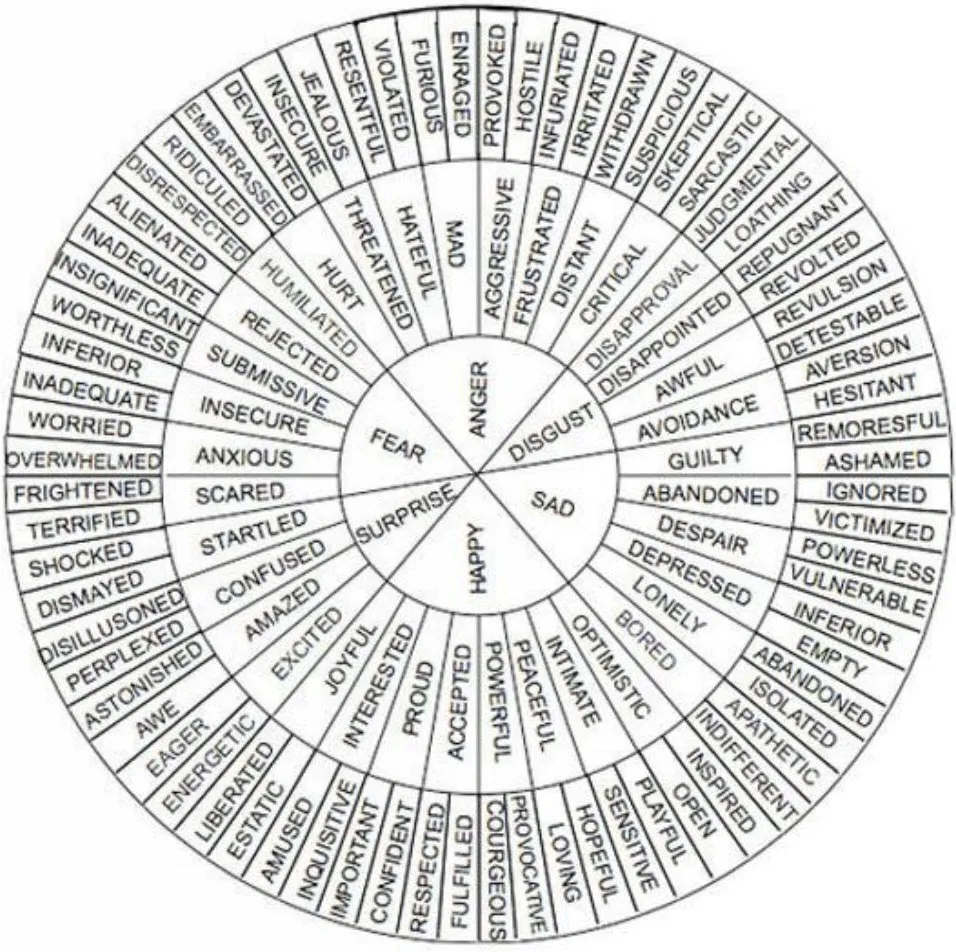
Technique #3: Hack Your Audience’s Brain With Repetition & Make the Sale
The Mere Exposure Effect is a theory developed by social psychologist Robert Zajonc.
Also known as the Familiarity Principle, this theory basically states that people tend to develop a preference for something merely because they’re familiar with it.
They take the same road to work every day—not because it’s faster, but because it’s familiar.
They read the same writer again and again because they’ve been reading them for years.
And they drink Simply Orange orange juice not because it’s clearly superior to Minute Maid (which it is), but because they see more advertisements for it.
See where this is going?
With your copywriting, you can actually use the Mere-Exposure Effect to your advantage.
And all it takes is repetition.
Bob Bly, one of the most famous copywriters today, said of repetition on a blog post:
I could not agree more. Virtually all top copywriters know and practice repetition. Young marketers think we are being redundant because they have not tested it.

In fact, we made it a point to use repetition on our homepage.
And one of the best things you can repeat in your copy is your business’ unique selling proposition (USP)—what makes you stand out from your competition.
For us, it’s the fact that our monthly service lets clients delegate their marketing tasks without having to pay the high costs (and hassle) of hiring.
Check out how often we repeat it on our pages below.



And when you make repetition of core points and values a standard part of your copywriting process, you can better sell your product or services to your audience.
How Can You Start Implementing It?
In addition to repeating your USP throughout your homepage, repetition also applies to rhetorical techniques too.
These techniques give weight to how persuasive your copy is because they perk up your audience’s ears and get them to concentrate on what you have to say.
Some of the best repetition-based rhetorical techniques you should try using in your copy are below.
- Alliteration – a noun used for the concept of words starting with the same phonetic sound and these words placed in a row or close together (Grammarist).
- Example: “Peter Piper picked a peck of pickled peppers.”
- Assonance – the noun used to describe repetitive sounds in words, specifically vowels, which happen at any point in the word (Grammarist).
- Example: “I lie down by the side of my bride"/"Fleet feet sweep by sleeping geese","Hear the lark and harken to the barking of the dark fox gone to ground"—Pink Floyd.
- Anaphora – repetition of a word or words at the beginning of two or more successive verses, clauses, or sentences (Dictionary.com).
- Example: “It was the best of times, it was the worst of times, it was the age of wisdom, it was the age of foolishness, it was the epoch of belief, it was the epoch of incredulity, it was the season of Light, it was the season of Darkness, it was the spring of hope, it was the winter of despair.”—Charles Dickens
- Epistrophe – the repetition of a word or words at the end of two or more successive verses, clauses, or sentences (Dictionary.com).
- Example: “For no government is better than the men who compose it, and I want the best, and we need the best, and we deserve the best.”—John F. Kennedy
As a little test, see if you can pick out which of these four rhetorical devices Apple is using on the pages below.
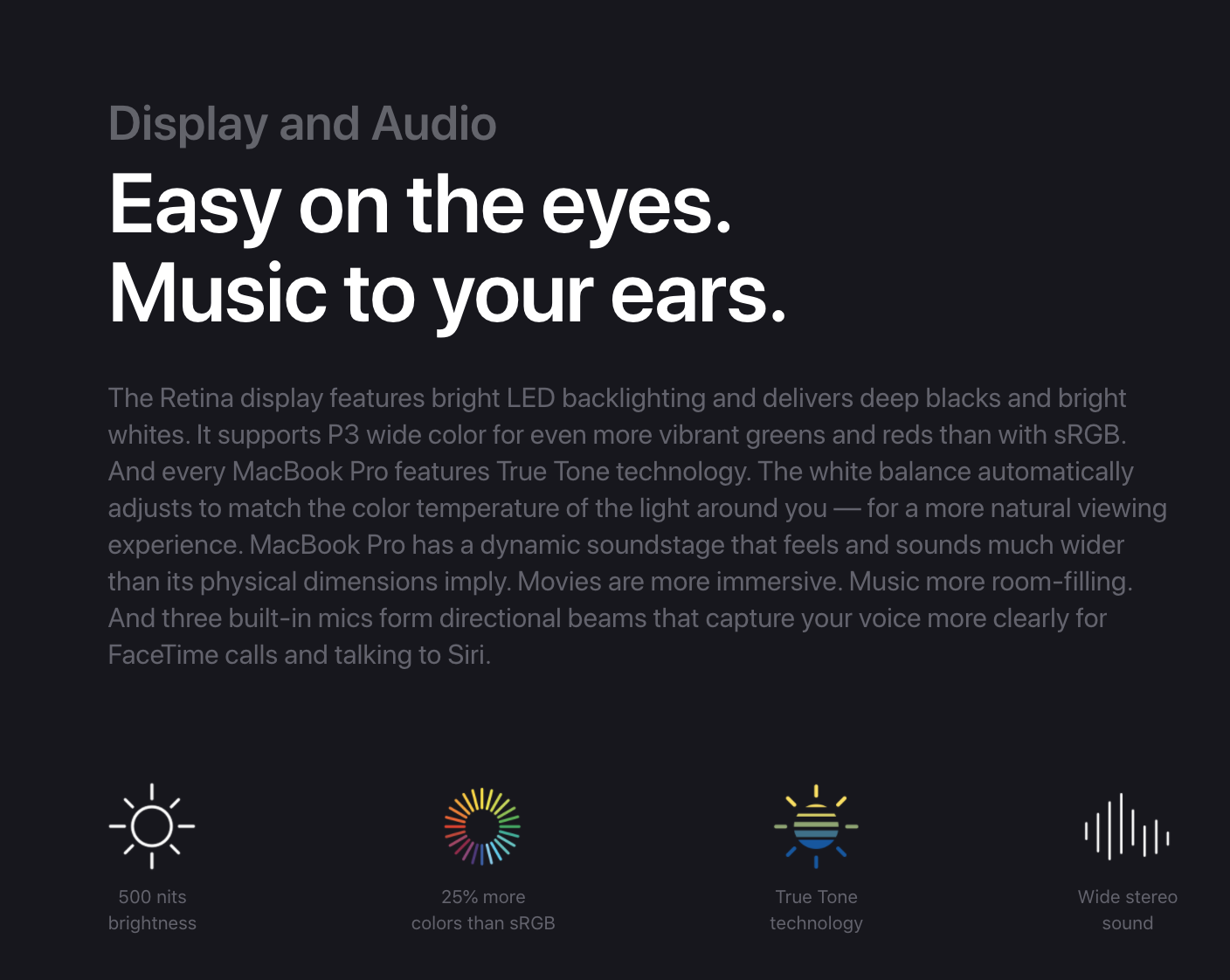
That one’s assonance (“easy,” “eyes,” “ears”).

And this one is anaphora because of the “all”s at the beginning of each sentence.
So, did you get them right?
Technique #4: Make Sure Your Copy is Focused More on the Audience than the Product
As social as we are and altruistic as we can be (given the right situation), humans are naturally self-interested.
When you hear a story about someone else, your brain immediately sets to work thinking about how you can learn from it.
When your friend is telling you a long story about their weekend, you find yourself losing focus and waiting for your turn to speak (don’t worry, we all do it).
And when there’s an advertisement for a service, you want to know exactly how you can benefit from using it.
You are concerned about you. Because you—like me and them and everyone else—are human.
So use that knowledge to your advantage by making your copywriting focused on the reader.
One great way of doing that is by including one of the most impactful power words (more on those later) in the English dictionary: you.
Address your audience directly throughout your copywriting.
See how Casper does it?


How Can You Start Implementing It?
Here are a few tips for making your copywriting more reader-focused.
- Use “You” Language: Just like in the examples above, try to incorporate more “you”s into your copy to keep your audience engaged.

- Focus on the Customer-Centered Benefits: Instead of just listing out the features of your product, start with how your audience will benefit from that feature and then introduce it.

- Ask Questions: Questions put the spotlight on your audience and force them to think about their own personal answer. Use them in your copy to keep them reading on.

- Tell a Story from Their Point of View: Stories are great for engagement. And when you frame a story from a reader’s perspective, they internalize the message even more.
Technique #5: Inject a Bit of Personality into Your Copywriting to Stand Out from the Crowd
If you want to stand out from your competitors, you have got to show your audience what makes you different.
It can be specific features on your product. It can be cost. It can be trustworthiness. It can be anything.
And all those differentiators can go a long way.
But one of the quickest ways to attract attention and set yourself apart from the crowd is by giving your brand some personality.
For example, remember when Skittles changed their marketing and started putting out those weird and slightly creepy commercials?
That’s banking on personality. It’s an offbeat personality, sure. But it’s a personality nonetheless.
And that personality has carried over to their entire marketing strategy. Just check out their homepage.

It’s off the wall, but it certainly makes the brand stand out.
Or look at Tushy, the increasingly popular bidet company that doesn’t hold back on the specifics of what they do.

It may not be the most elegant way to talk about toilet paper alternatives, but it certainly stands out.
How Can You Start Implementing It?
There aren’t many tools or techniques you can use here besides trying to cultivate a unique brand that matches your product or services.
Some ways you can do that is by using humor, slang, and colloquial language in your copywriting.
But more than anything else, just try to make your copy sound more human.
Technique #6: Appeal to Logic by Backing Up Your Points with Research & Statistics
While emotion is what gets your customers buying your product or signing up for your services, logic does play a role in the decision making process too.
In particular, products that don’t bank on impulse buys are ripe for logical arguments for buying.
For instance, the Snickers candy bar at the checkout aisle isn’t using logic to convince you to add it to your cart.
But the project management software for your team probably does use logic to get you to click “buy now.”
Case and point, check out Neudesic’s free consultation landing page for machine learning projects.

Up front and center is a big and bold fact about how many projects in their industry (almost 9 out of 10) never succeed.
Using statistics like that not only caters to the industry (data science) but also matches the financial gravity of the decision (choosing to sign on with a potentially expensive consultancy).
SERP Thrive also affirms that adding numbers and statistics lend credibility to your copy and make your claims more persuasive.
How Can You Start Implementing It?
Below are just a few tips you can use to make incorporating stats and figures into your copy even easier.
- Use Primary Sources: When using statistics, never ever link to a site that links to another site for that statistic. Instead, find the initial source of the information. Otherwise, it can be difficult to know which statistics are trustworthy and which are bunk.
- The Alexa Rank: Having trouble knowing if you should trust a website? Try using Alexa’s site info section of their website. In general, the site you’re taking information from should be under 100,000 in global rank. If it’s over that number, you may want to move on and find a different source.
- Google’s Explore Tool in Docs: Last but not least, Google Docs makes it easy for you to seek out statistics from the world wide web with the Explore tool. This tool (accessed from the “Tools” section) gives you a side window right in your document where you can browse the internet and get the info you need quickly without having to switch tabs. Try keeping it open as a way to remind you to back up your claims with evidence.

Technique #7: Use Storytelling to Immerse Your Audience & Sell Your Services/Products
I’ve talked about the selling power of stories before so I won’t dwell too much on it here.
But as most copywriters know, immersing your readers in a story is a fantastic way of showing them why they should buy your product or services.
The biggest part of a story’s selling power comes from the fact that it reduces counterarguing—your brain’s natural inclination to find reasons not to do something.
The more immersed your reader is in your story, the less likely they are to dispute the points you are bringing up.
And the better you are at storytelling, the more immersed your reader will be.
One great example of the converting power of storytelling comes from Two Young Men, the Wall Street Journal’s $2 billion sales letter.
This sales letter was so successful in driving new subscriptions that it circulated for a full 31 years from 1975 with only minor alterations. 31 years!
And guess what? It told a story. Have a look at the introduction below and see if you start losing yourself in the plot.

How Can You Start Implementing It?
There are three main ways you can tell a better story (and improve your copywriting conversions):
- Focus on Immersion with Detail: Using vague language is a surefire way to get your audience to not care about what it is you’re telling them. Instead, focus on the details of the scene, the mental states of the characters, and the progression of the plot. The more details you can give, the more immersive your story is going to be.
- Visual Language: In that same vein, use visual language to paint a clearer picture of your story. Instead of saying “They shook hands,” try saying “They greeted each other by firmly locking their hands together.” Or “the air was frigid, relentless, and biting” rather than “it was cold.”
- Tap into Emotion: Here we are again with emotion. It has a place in storytelling too. Because when you tap into emotion with your storytelling, you’re making it easier for your readers to empathize with the main characters. And the more they empathize with them, the less counterarguing there is going to be.
Technique #8: Use Power Words to Inspire Action
The more words you have in your copywriting arsenal, the better positioned you’ll be to accurately explain an idea, an object, or an event.
It’s just like how the most vibrant paintings are created with a wide variety of colors.
And if you’re a copywriter looking to sell, then you need to know how to use “power words.”
Power words are words that have an almost mystical quality of breaking through the static and grabbing your reader’s attention.
We’ve already talked about the most impactful power word: “you.”
But there are plenty more to add to your copywriting toolbox. The most noteworthy are:
- Imagine (creates imagery in the reader’s head)
- Because (creates a bridge between one idea and another)
- Actually (introduces an interesting fact or point)
- Introducing (adds novelty)
- Guarantee (conveys trustworthiness)
- Free (duh)
- But (redirects the flow of the sentence and grabs attention)
And when you use these words in your copywriting, you can achieve much higher engagement rates and nudge your audience towards your checkout page.
Let’s take a look at a few examples.
First off, Mailchimp, which makes ample use of the term “free” throughout their homepage copy.
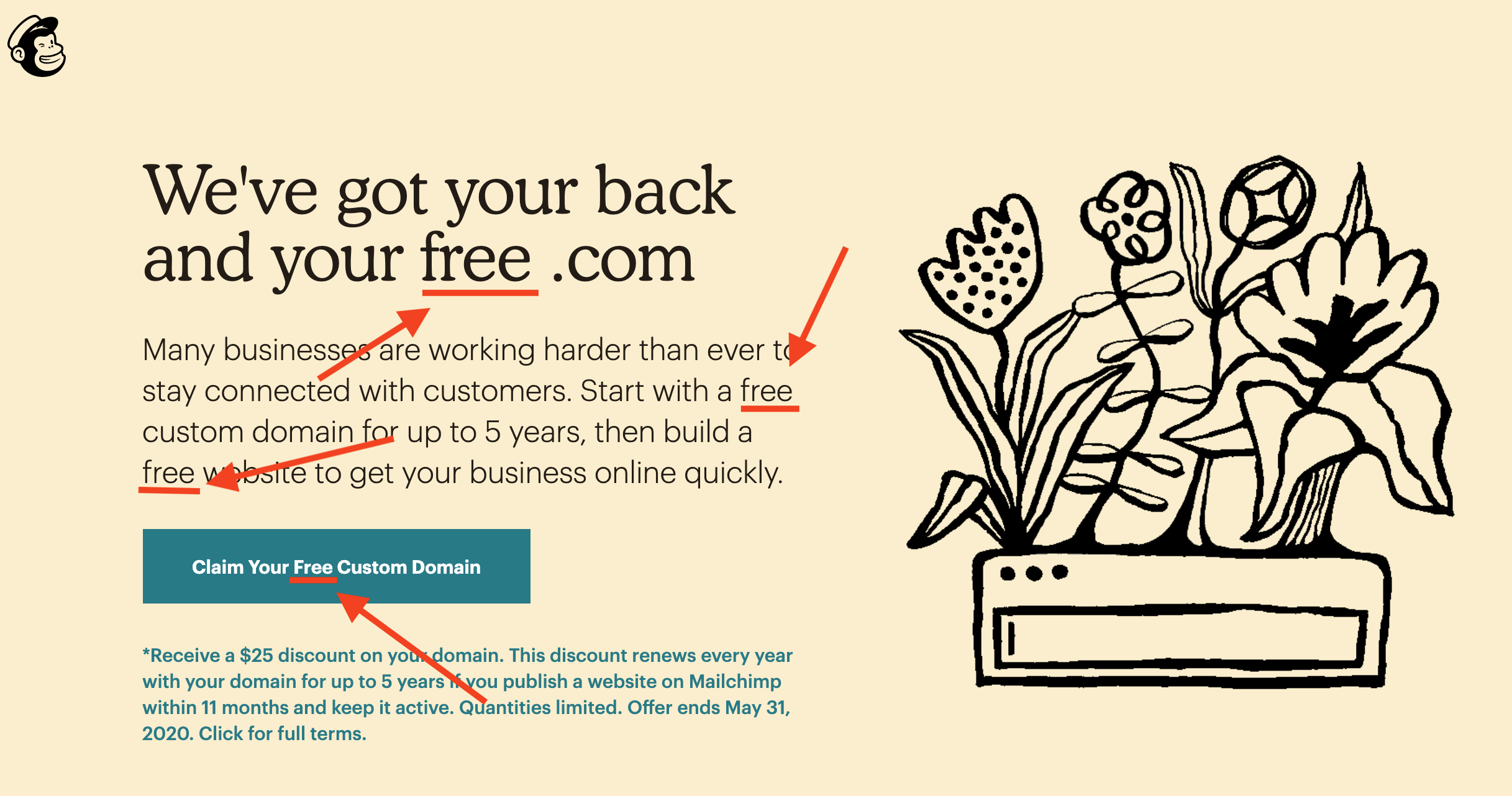
They mention “free” a whopping four times here!
It’s no wonder they were worth $4.2 billion in 2018.
And have a look at how Growbo uses power words.
We know how the power word “guarantee” can immediately get your readers to trust your product or service.
And that’s why we put it front and center on the pricing page below.

And when you start incorporating power words like these into your copy, you’ll be amazed at how quickly your conversions start to skyrocket.
How Can You Start Implementing It?
Not much in terms of tools and techniques here...
Just use the power words listed above!
Technique #9: Sprinkle Social Proof into Your Copy
While I wouldn’t necessarily call it kicking a dead horse, I’ve talked about social proof before… like a lot.
And I’m not alone.
Marketing gurus like Neil Patel, Gary Vaynerchuck, Ryan Deiss, and Rand Fishkin have all touted the massive benefits of incorporating social proof into your copywriting.
Why? Because social proof converts.
When you can convince your audience that your product or service is trusted by other people, then they’re going to be much more likely to buy from you.
And in fact, I actually started this section with social proof by calling out the big-name marketers above (did ya notice?).
By telling you that these big names use social proof, I was actually selling you on social proof. That’s so meta…
Now, let’s look at how it can be used.
Take luggage company Away for example.
On the one hand, this company has used a similar technique of latching onto a big name in order to boost their own authority. Check out their partnership with Serena Williams below.
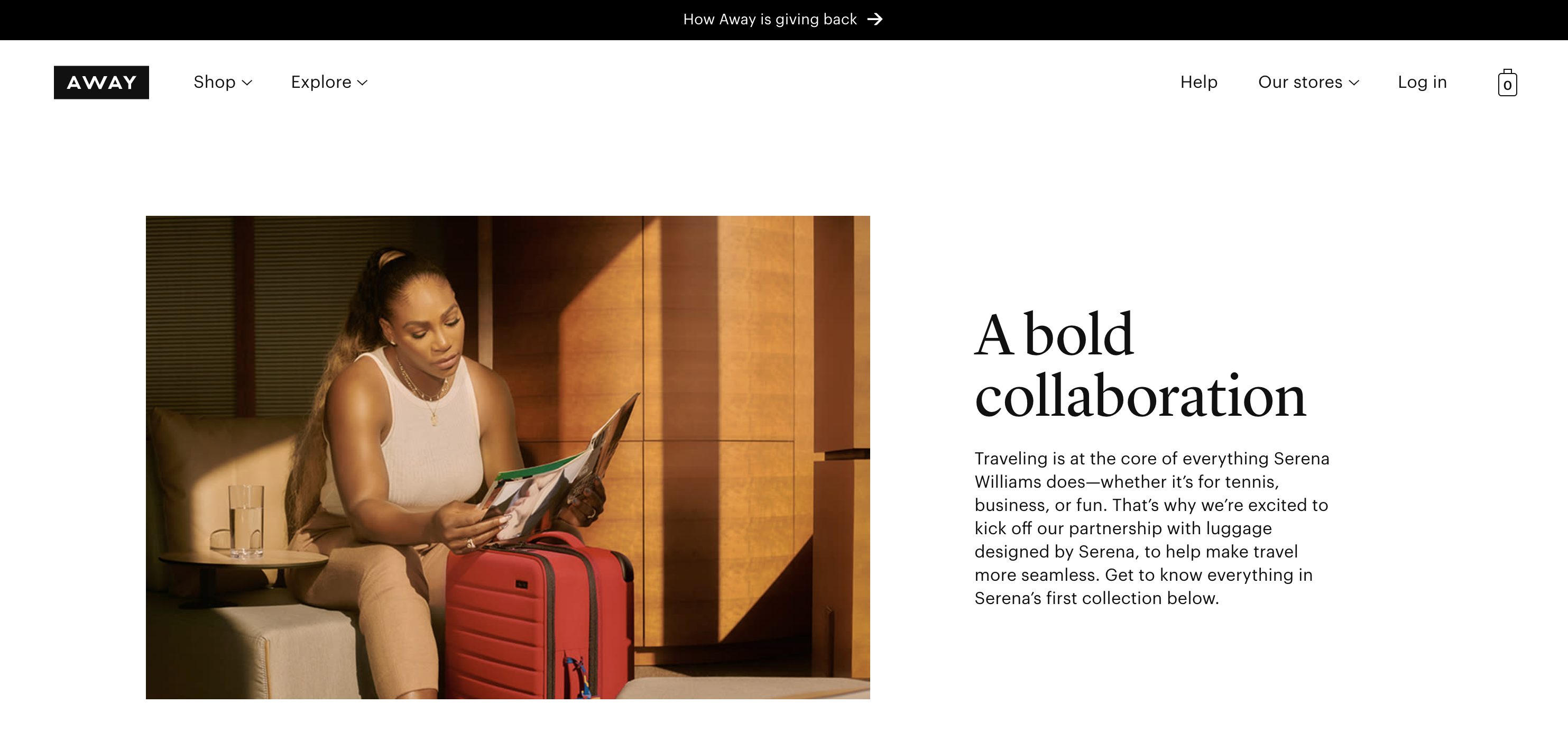
But that’s not all.
They also dedicate an entire 3 sections of their homepage to displaying social proof.
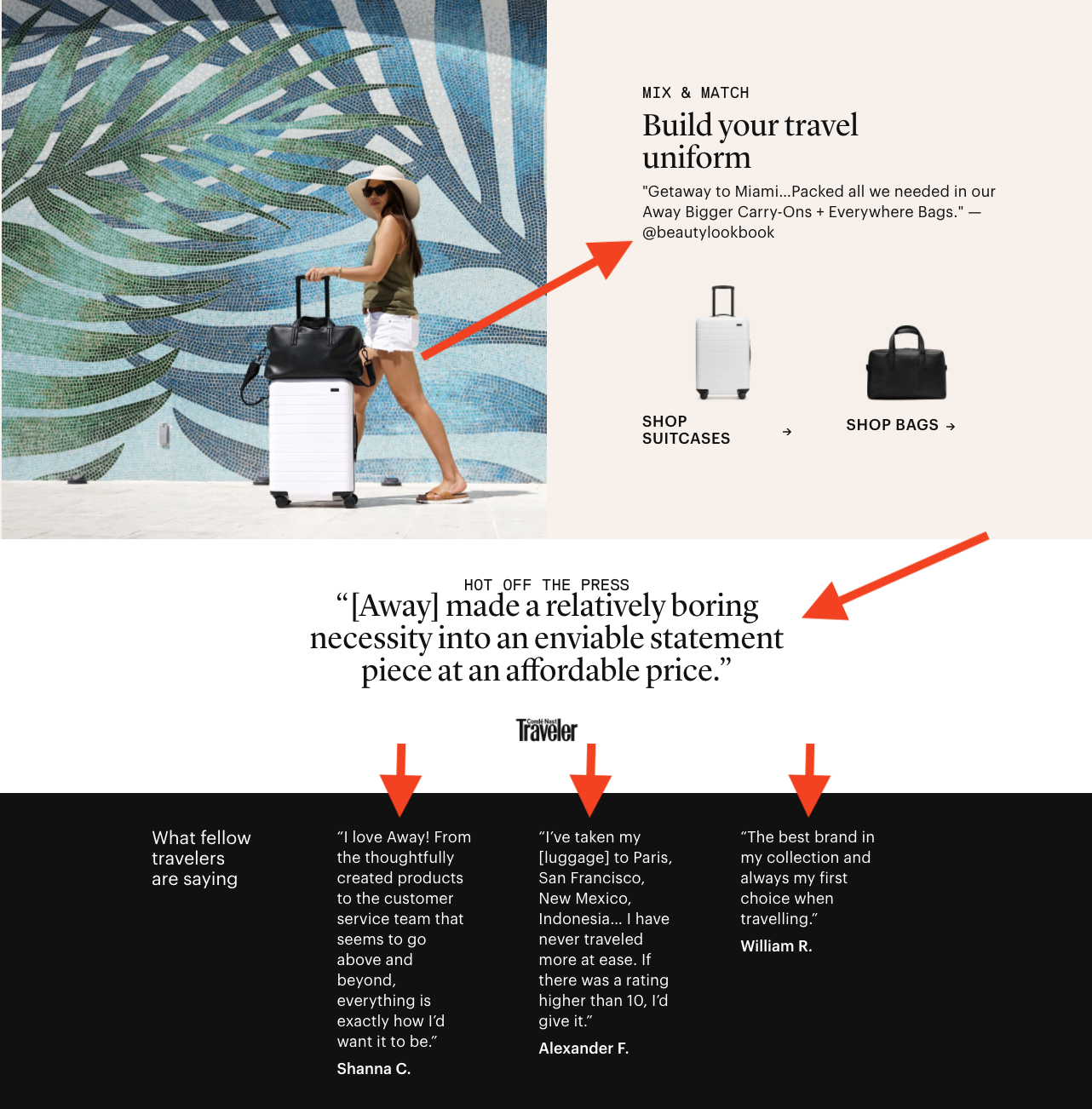
See that?
Not only do they include a social media mention from an influencer with 97K+ followers (the top one). But they also pop in an endorsement from a magazine as well as 3 customer testimonials.
And again, this all happens on the homepage.
As you can see, Away really knows how to leverage their social proof.
How Can You Start Implementing It?
Take a page from Away’s book and highlight whatever social proof you have front and center.
Now, there are a few different types of social proof. Here’s a quick list of some of the best kinds.
- User testimonials

- User reviews and ratings (think of stars on Amazon)
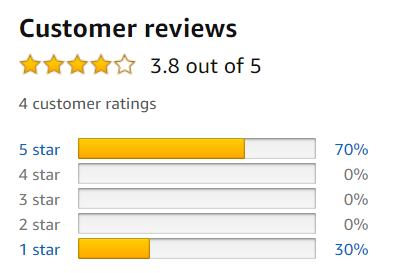
- Publication mentions and features

- Certifications and awards

- Social media shares and likes

- Vanity stats (“Millions served,” “$25 Million+ Sales Generated,” 10 Years in Business,” etc.)

- Endorsements by celebrities or thought leaders in your field
No matter what kind of social proof you use, the key takeaway is that you should use it as much as possible.
So start gathering testimonials religiously. Ask for customer ratings regularly. And for God’s sakes, incorporate those into your landing pages as soon as you can.
Because social proof sells.
Technique #10: Write for Skimmers
Let me ask you, which of these two documents would you rather read?

The obvious answer is the page on the right.
That’s because it’s format is far more approachable than the page on the left.
No one likes seeing a giant slab of words. It conveys density, work, and a kind of chore to read through.
Most people won’t even dive into what it is you have to say at all if your copy looks like that.
But when you break apart your information into easily digestible chunks separated by varied format, headers, and more, people will be much more likely to keep on reading.
In fact, according to the user experience researchers Nielsen Norman Group, most people will only read about 20% of a full web page.
Skimming is inevitable. And making the decision to write with eye-catching design elements in mind can help your readers absorb the important points quickly and effortlessly.
How Can You Start Implementing It?
Below are a few ways you can help break up your copywriting format to make it easier to read for your audience.
- Frequent Headers: Adding headers to your sections (whether in articles or on your website or in your lead magnets) is a great way to break up walls of text. Plus, it also gives skimmers and even search engines an idea of what each section is talking about, making it easier for them to find relevant information.
- Bullet Points & Numbered Lists: Using bullet points and numbered lists have the dual benefit of keeping your copywriting organized and adding variety to your formatting. Try to include both as frequently as possible.
- 3 Sentence Paragraphs MAX: This isn’t a research paper. Big chunks of text in a single paragraph can seem daunting. Instead, try to stick to the rule of 3 sentences per paragraph. Plus, it helps readers feel like they’re making more progress through your page.
- Plenty of Visual Elements: And finally, add plenty of images to your pages. No matter how flowery and valuable your copy may be, your audience still needs a well-placed and interesting picture every now and then to hold their attention. Just be sure that the images on your landing page are real photos rather than boring stock photos (one of the best ways to improve your landing pages).
Technique #11: Speak Simply without Being Simple
And last but certainly not least, say what you have to say and cut out the fluff.
How’s that for getting to the point?
There’s certainly a time and a place for flowery language in your copywriting. And in fact, using emotionally charged and visual words can do wonders for your conversion rates.
But in general, you should aim for clear, concise copy that gets your message across in as few words as possible.
Here are a few examples from our Proven Sales Conversion Pack to show you just how much clarifying your language can boost your conversions.
This example shows how using clearer copy on a lead form led to 30% more leads.
Before:

After:

And this example led to 72% more free trial optins by clarifying the language on the page.
Before:

After:

How Can You Start Implementing It?
So the question is, how do you write clearer, more concise copy? And luckily, we’ve got 3 resources below you can use to do just that.
- Hemingway App: Modeled after the style of one of America’s greatest writers, the Hemingway App checks for adverbs, passive voice, sentence complexity, and so much more. It’s a fantastic way to both simplify and clarify your copy. We even use it for all of our articles!
- Grammarly: Once just a grammar checking app, Grammarly has since become a great tool for checking the readability of your copywriting. It gives you suggestions on how to improve copy conciseness and even suggests alternatives to overly-complicated words and phrases.
- Law of Alignment: The Law of Alignment is a bit different than the other tools above. Instead, it focuses more on how your copy relates page to page along the customer journey. Following the Law of Alignment helps you meet customer expectations so that they won’t ever be confused about where they are and what actions you want them to take. Study it to make sure your copy is actually helping to nudge your prospect in the right direction.
Conclusion
Want to delegate all your marketing and funnel work done—without the headaches of hiring? Download our free guide: 33 Marketing Projects You Can Delegate to Growbo and discover how to save 100+ hours a month, grow faster, and scale without the overhead.
So there you have it!
You now know the 11 killer copywriting techniques you can use to boost the conversion rate on your landing pages.
And just in case you’ve forgotten them, they are…
- Spend Extra Time Perfecting Your Headlines
- Use Emotion to Spur Action in Your Audience
- Hack Your Audience’s Brain with Repetition & Make the Sale
- Make Sure Your Copy is Focused More on the Audience than the Product
- Inject a Bit of Personality into Your Copywriting to Stand Out from the Crowd
- Appeal to Logic by Backing Up Your Points with Research & Statistics
- Use Storytelling to Immerse Your Audience & Sell Your Services/Products
- Use Power Words to Inspire Action
- Sprinkle Social Proof into Your Copy
- Write for Skimmers
- Speak Simply without Being Simple
Now, which of these techniques do you plan on using today to boost your landing page conversion rate? Do you have any other techniques our readers can use to beef up their copywriting?
Let us know in the comments below.
And as always,
Keep convertin’, stay focused.














